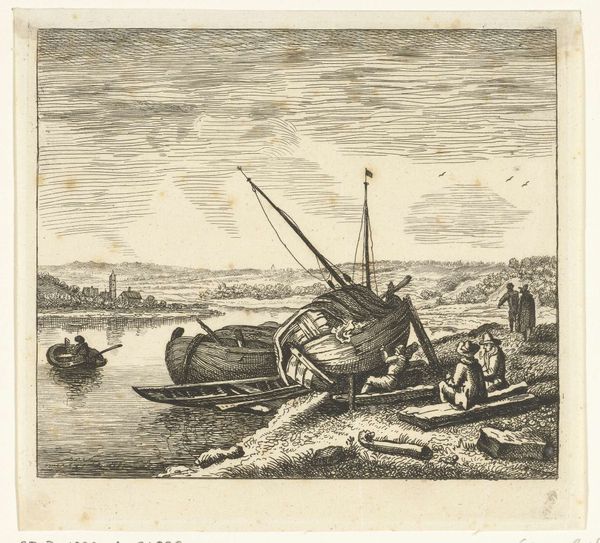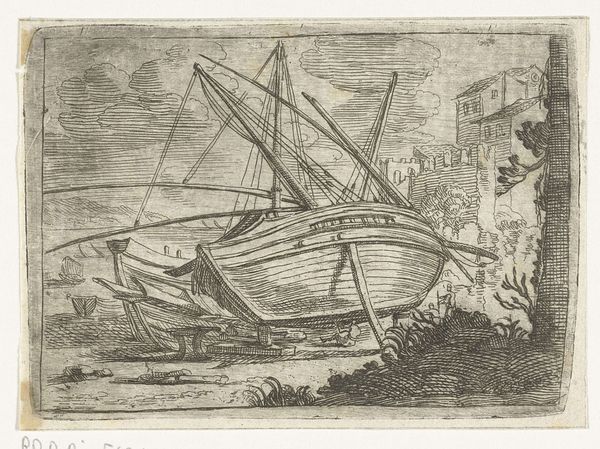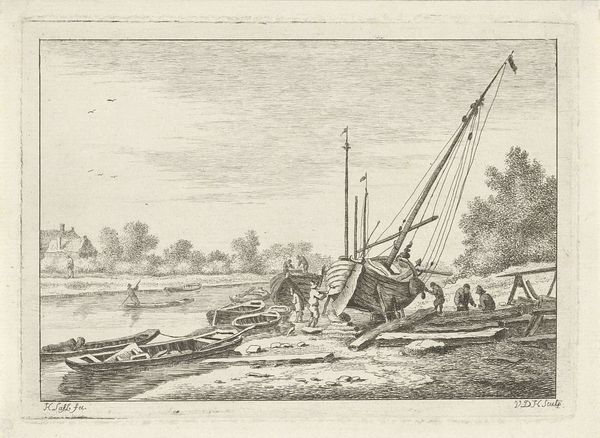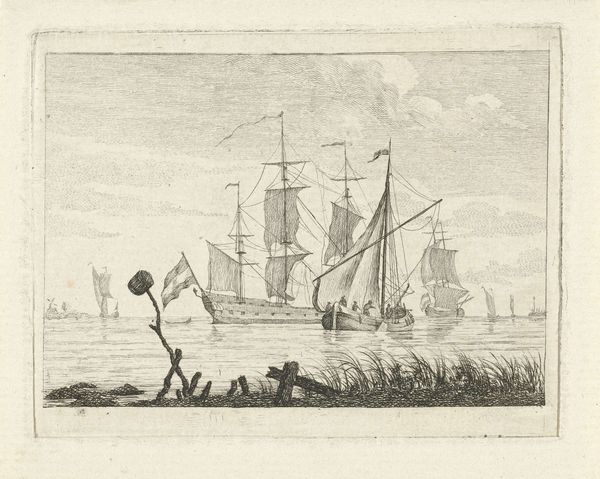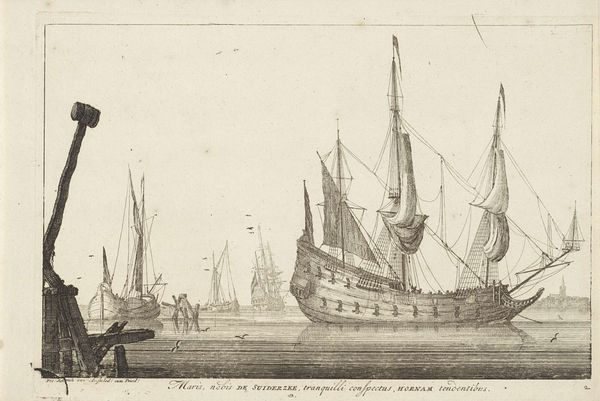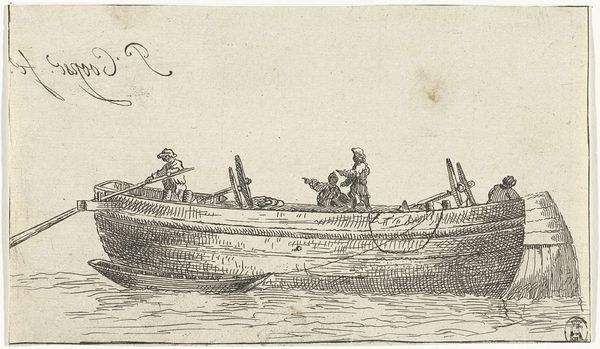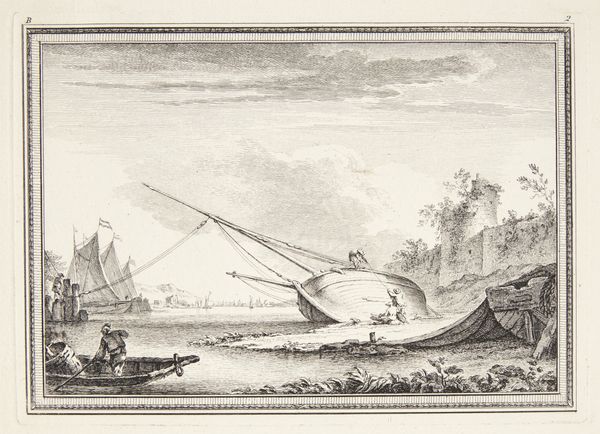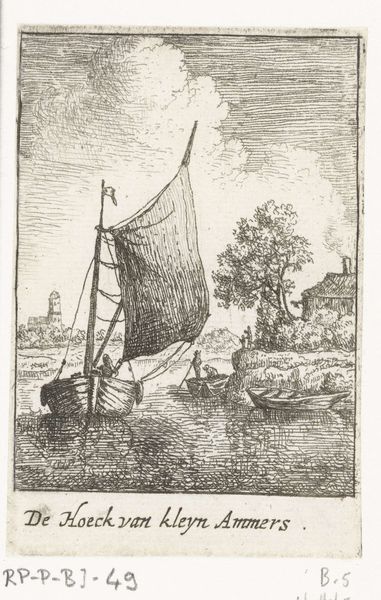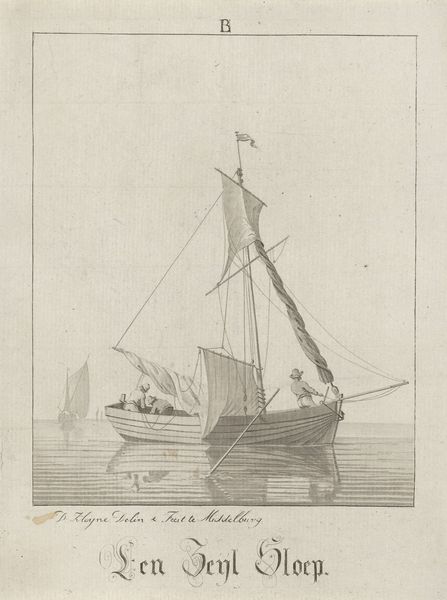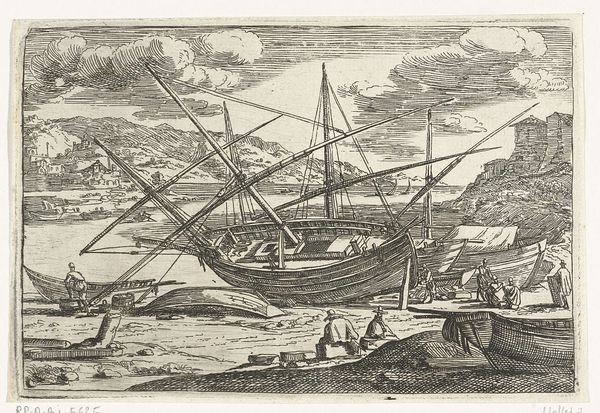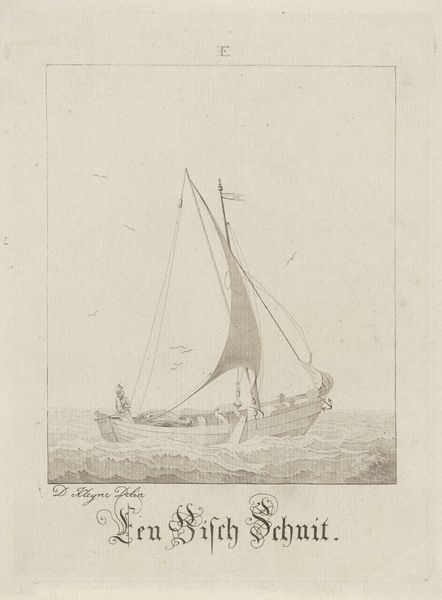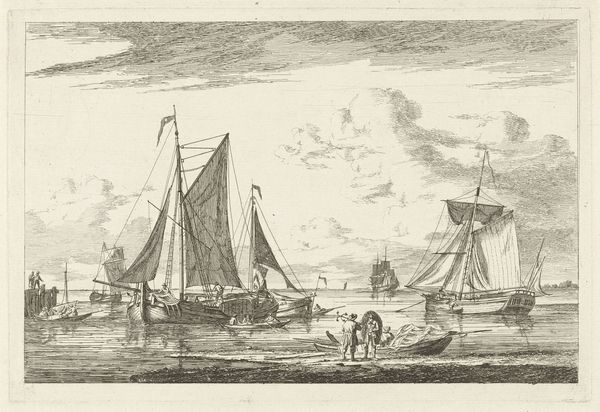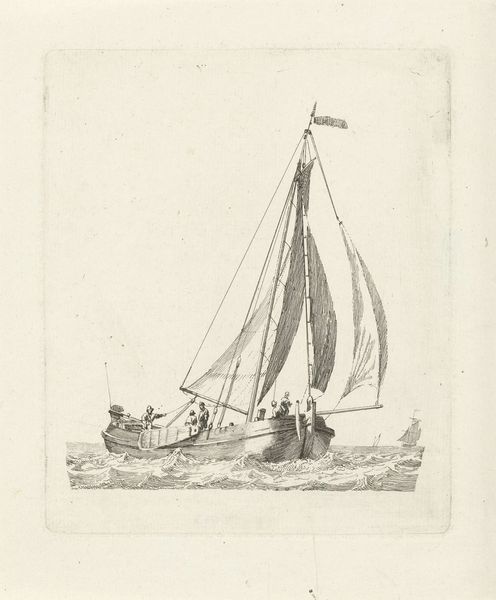
print, etching, engraving
#
baroque
#
dutch-golden-age
# print
#
etching
#
old engraving style
#
engraving
#
realism
Dimensions: height 106 mm, width 177 mm
Copyright: Rijks Museum: Open Domain
Editor: This is "Three Fish on the Beach," an etching by Albert Flamen from 1664. It's quite detailed, capturing the texture of the fish scales and the rough surface of the sand. What jumps out to me is the contrast between the still life in the foreground and the hazy, distant seascape. What do you see in this piece? Curator: Intriguing observation. From a formalist perspective, the interplay of lines and forms dominates. Note how Flamen utilizes varying densities of etched lines to delineate the volumes of the fish, contrasting the smooth skin with the textured scales. The composition guides our eye from the intricate details of the shells and the fish's eyes to the simplified, almost abstract rendering of the background elements – the boats, the distant shore. Editor: So, it's less about what the fish *are* and more about *how* they are represented? Curator: Precisely. Observe how the arrangement of the fish creates a subtle rhythm, a visual harmony. Consider the horizontal orientation emphasized by the three fish positioned parallel to each other, counterpointed by the vertical accents of the boats on the horizon. Editor: I never considered the formal arrangement that closely. The artist really commands our attention, from detail to overall layout. Is the subdued emotional tone just inherent to the medium? Curator: Etching, with its capacity for fine detail and tonal variation, is particularly adept at rendering nuanced textures and light effects. What do you notice about the use of light and shadow here, and how it affects our perception of form and space? Editor: It creates depth, and almost a melancholic atmosphere. I guess I expected to see a seascape of sorts; still life never crossed my mind when regarding bodies of water. Curator: The arrangement of these still-life elements within the picture plane is what truly captivates here, creating a structured viewing experience. The lines form meaning, regardless of our knowledge of the setting or the content of the scene. Editor: So, understanding the "how" really shapes our perception of the "what." That gives me a lot to think about regarding not only this piece, but other works I admire! Curator: Exactly. The careful observation of these visual components opens avenues for broader critical analysis, as intended through a formalist lens.
Comments
No comments
Be the first to comment and join the conversation on the ultimate creative platform.
